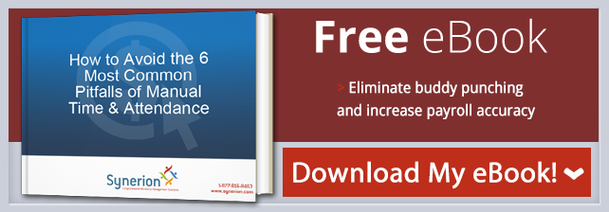 You've decided that a time and attendance solution is right for your business, but how do you justify those initial costs to your executive management team? Don't go into a meeting with just the benefits or a hastily constructed plan. Building a business case is a great way to justify costs and fully explain the necessity of the upgrade, ensuring that your proposal is seriously considered. Use this guide to build a strong business case for implementing a time and attendance solution in your workplace.
You've decided that a time and attendance solution is right for your business, but how do you justify those initial costs to your executive management team? Don't go into a meeting with just the benefits or a hastily constructed plan. Building a business case is a great way to justify costs and fully explain the necessity of the upgrade, ensuring that your proposal is seriously considered. Use this guide to build a strong business case for implementing a time and attendance solution in your workplace.
Start with Discovery
While there are clearly benefits to automation, applying those benefits to your specific process is essential. Every business case needs to start with a period of discovery which entails going through the current process and documenting where that system breaks down resulting in lost time and costs. Take an in-depth look at what employees and managers are currently doing to manage timesheets.
Know the Financial Aspects
One of the biggest sticking points in business is cost. Successful business cases address all aspects of cost from the initial set up to time spent training to return on investment. Understand the indirect and direct costs of a new system and commit those costs to paper. Be very clear about the initial expenses and in what period of time those costs with be recouped through improved processes. A straightforward financial analysis can help catapult your business case to the front of the line.
Propose a New Process
A solid business case doesn't just provide a solution, it provides a process. Create a timeline for implementation and training. Outline how long it will take to test and validate the system and how it will be rolled out company wide. Include the daily process for managers and employees, how their workload will change and how it will improve. A juxtaposition between the former process and the new process can help upper management conceptualize the change in process.
Provide an Alternative
Though it may seem counterintuitive, providing an alternative can be just as convincing as listing out the benefits of the change. A simple alternative to use is "no change," or simply allowing the process to continue as is. Providing the financial and business consequences of both changing to automated software and continuing on with the current process can put the initial price of automation into perspective.
Format Your Findings
Creating a finished project is essential to your business case. It needs to look professional and polished, clearly stating the major findings, recommendations, financial value analysis and next steps. All supporting documentation should be included with the business case for those who need additional information.
Create an Executive Summary
Despite all the great information in your business case, some upper level employees simply need to give a yes or no rather than delve into the specifics of the project. An executive summary is a great piece to add to your business case to go over the proposed highlights. Assemble the executive summary using information that appeals to each member. Highlight finance, compliance, savings and employee satisfaction.
A business case may take time, but a well-made case can drastically increase the opportunity for it to be considered by your executive team. Follow these steps to compile a business case that addresses the key message that management needs to see to enact a time and attendance software system.
